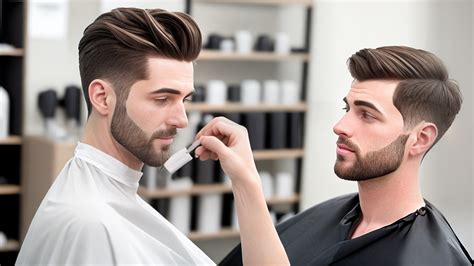Why Does Hair Matter?

Hair plays a pivotal role in shaping a man’s identity and self-esteem. Studies have shown that hair loss can lead to decreased confidence, social anxiety, and even depression.
Benefits of Hair Units for Men:
- Enhanced Appearance: Restore a natural, youthful appearance by replacing lost hair.
- Boosted Confidence: Feel more confident in social and professional settings with a fuller head of hair.
- Improved Self-Esteem: Regain a sense of well-being and self-worth through a positive transformation.
- Versatility: Choose from various styles and colors to suit your preferences and complement your natural hair.
- Convenience: Enjoy the ease of application and removal, allowing for flexible styling options.
1. Toupees
- Description: A partial hair unit that covers the crown or front of the head.
- Benefits: Provides instant volume and coverage for areas of thinning or baldness.
- Materials: Typically made from human hair, synthetic fibers, or a combination of both.
2. Wigs
- Description: A full head of hair that completely covers the natural hair.
- Benefits: Offers the most complete coverage and versatility, allowing for a wide range of styles.
- Materials: Similar to toupees, wigs can be made from human hair, synthetic fibers, or a blend.
3. Hair Systems
- Description: A semi-permanent hair unit that is attached to the scalp using adhesives or clips.
- Benefits: Long-lasting and secure, providing a more natural look than wigs or toupees.
- Materials: Typically made from human hair or a combination of human and synthetic fibers.
4. Hair Fibers
- Description: Microscopic keratin or cotton fibers that are applied to the scalp and cling to existing hair strands.
- Benefits: Creates the illusion of thicker, fuller hair without the need for a full hairpiece.
- Materials: Made from natural or synthetic fibers that are safe for use on the scalp.
5. Scalp Micropigmentation
- Description: A non-surgical procedure that implants pigment into the scalp, creating the illusion of hair follicles.
- Benefits: Provides a natural-looking solution for hair loss, without the need for hair units or surgery.
- Materials: Pigment is typically made from iron oxide or carbon-based pigments.
- Identify Hair Loss Pattern: Determine the areas of your scalp that are experiencing the most hair loss.
- Consider Lifestyle: Choose a hair unit that fits your lifestyle and maintenance preferences.
- Select Materials: Opt for materials that are durable, comfortable, and match your natural hair texture.
- Get a Professional Consultation: Seek advice from a hair specialist to find the best hair unit for your individual needs.
- Proper Application: Ensure a secure and natural-looking fit by following the instructions provided by your hair specialist.
- Maintenance: Clean and style your hair unit regularly using recommended products.
- Removal: Gently remove your hair unit at night or as needed, following the proper removal technique.
- Storage: Store your hair unit properly in a cool, dry place when not in use.
- Are hair units noticeable? With proper application and maintenance, hair units can be virtually undetectable.
- How long do hair units last? The lifespan of a hair unit varies depending on the type, materials, and care. Hair systems and wigs can last several years, while toupees and hair fibers typically last a few months.
- Can I style hair units? Yes, most hair units can be styled using heat tools and hair products, but follow the instructions provided by your hair specialist.
- Are hair units expensive? The cost of hair units varies greatly depending on the type, materials, and quality. Expect to pay anywhere from a few hundred dollars to several thousand dollars.
- Can I sleep in a hair unit? It is not recommended to sleep in a hair unit regularly, as it can put strain on the unit and your scalp.
- Where can I find a hair unit? Consult with hair specialists, visit hair restoration clinics, or purchase online from reputable vendors.
